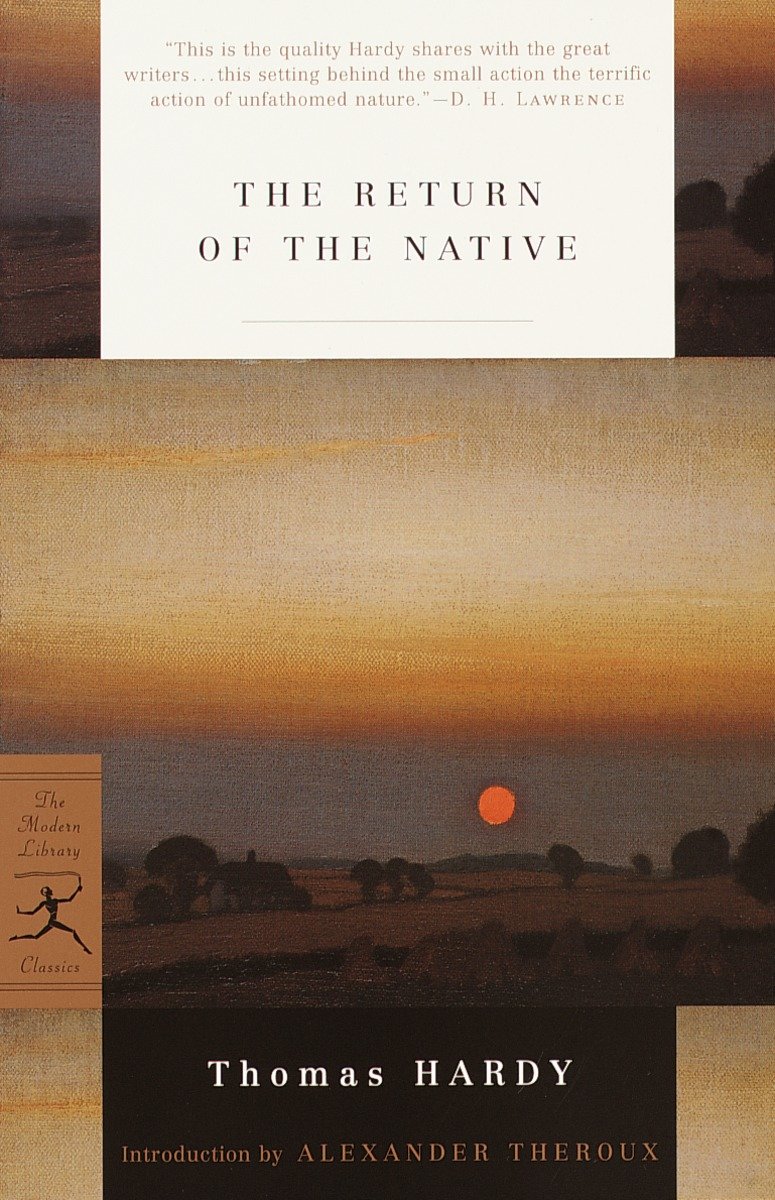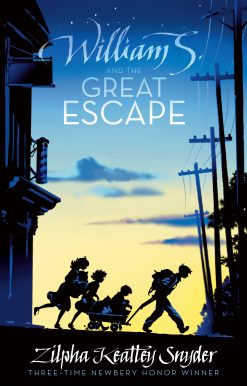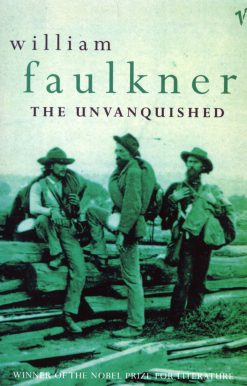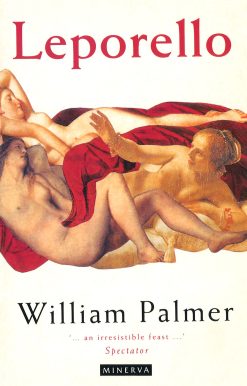The Return of the Native
11.00 JOD
Please allow 2 – 5 weeks for delivery of this item
Description
One of Thomas Hardy’s most powerful works, The Return of the Native centers famously on Egdon Heath, the wild, haunted Wessex moor that D. H. Lawrence called “the real stuff of tragedy.” The heath’s changing face mirrors the fortunes of the farmers, inn-keepers, sons, mothers, and lovers who populate the novel. The “native” is Clym Yeobright, who comes home from a cosmopolitan life in Paris. He; his cousin Thomasin; her fiancé, Damon Wildeve; and the willful Eustacia Vye are the protagonists in a tale of doomed love, passion, alienation, and melancholy as Hardy brilliantly explores that theme so familiar throughout his fiction: the diabolical role of chance in determining the course of a life. As Alexander Theroux asserts in his Introduction, Hardy was “committed to the deep expression of [nature’s] ironic chaos and strange apathy, even hostility, toward man.”
Additional information
| Weight | 0.37 kg |
|---|---|
| Dimensions | 2.42 × 13.14 × 20.32 cm |
| PubliCanadanadation City/Country | USA |
| by | |
| Format | Paperback |
| Language | |
| Pages | 448 |
| Publisher | |
| Year Published | 2001-2-13 |
| Imprint | |
| ISBN 10 | 037575718X |
| About The Author | Thomas Hardy was born on June 2, 1840, in a thatched-roof cottage in upper Bockhampton, Dorset, England, a prophetic birthplace that lay in the center of 'Wessex,' the fictional region of southwest England which would serve as the backdrop for his novels. The eldest son of a prosperous builder and stonemason, Hardy was educated at the village school and apprenticed at the age of sixteen to local architect and church restorer John Hicks. In 1862 he went to London to pursue his architectural career; he also began writing at this time. Hardy returned to Dorset in 1867 to become assistant to John Hicks and wrote his first novel, The Poor Man and the Lady, of which only fragments remain. Although George Meredith, who was reader for Chapman & Hall publishers, advised against its publication, he encouraged Hardy to keep writing, preferably a story with a more complicated plot. Over the next several years he produced three more novels: Desperate Remedies (1871) and Under the Greenwood Tree (1872) were published anonymously, but A Pair of Blue Eyes (1873) bore the author's name. In November 1872, Leslie Stephen, the distinguished critic and editor, wrote to Hardy inviting him to contribute a novel for serialization in the Cornhill Magazine, a prestigious monthly that had published the work of such established writers as Anthony Trollope. Hardy accepted and in his letter to Stephen added that 'the chief characters would probably be a young woman-farmer, a shepherd, and a sergeant of cavalry.' He wrote Far from the Madding Crowd both in and out of doors at Bockhamptom as if possessed. 'Occasionally without a scrap of paper at the very moment when [I] felt volumes . . . [I] would use large dead leaves, white chips left by the woodcutters, or pieces of stone or slate that came to hand,' Hardy later recalled. Published anonymously in 1874, Far from the Madding Crowd sold out in just over two months and marked the turning point in Hardy's literary career. As Virginia Woolf later noted: 'The subject was right; the method was right; the poet and the countryman, the sensual man, the sombre reflective man, the man of learning, all enlisted to produce a book which, however fashions may chop and change, must hold its place among the great English novels.' The success of Far from the Madding Crowd in 1874 encouraged Hardy to abandon architecture and devote himself entirely to the craft of fiction. His next novel, The Hand of Ethelberta (1876), also appeared in the Cornhill Magazine but did not repeat the success of its predecessor. In 1874 Hardy married Emma Lavinia Gifford, and the couple soon settled in an idyllic cottage overlooking the Dorset Stour, at Sturminster Newton, where Hardy wrote The Return of the Native (1878). In 1878 he moved to London. Although he became a well-known figure in literary circles and was considered a catch for hostesses, Hardy wrote three disappointing 'minor' novels during his years there: The Trumpet-Major (1880), A Laodicean (1881), and Two on a Tower (1882). This fallow period in his career seemed to lift in 1885 with his return to Dorset to live at Max Gate. Over the next three years he published The Mayor of Casterbridge (1886), which many regard as his greatest tragic novel, The Woodlanders (1887), and his first collection of short stories, Wessex Tales (1888). In 1891 Tess of the d'Urbervilles appeared, and in 1895 Hardy's final novel, Jude the Obscure, came out. The book sent shock waves of indignation rolling across Victorian England. It was denounced as pornography and subjected the author to an avalanche of abuse. Hardy's disgust at the public's reaction led him to announce in 1896 that he would never again write fiction. During the remaining years of his life, Hardy devoted himself to poetry, publishing his first book of verse, Wessex Poems, in 1898. A second collection, Poems of the Past and Present, appeared in 1901. Over the next five years Hardy wrote The Dynasts, an epic drama about the Napoleonic War. In 1912 he made a final revision of his novels for the authoritative Wessex Editions. Hardy's wife died suddenly the same year. In February 1914 he married his longtime secretary, Florence Emily Dugdale. Over the next decade Hardy continued to write poetry and to work on his autobiography, The Early Life of Thomas Hardy, which was supposedly authored by his second wife and published posthumously. Thomas Hardy died in Dorset on January 11, 1928. His heart was buried in the Wessex countryside in the parish churchyard at Stinsford; his ashes were placed next to those of Charles Dickens in the Poets' Corner of Westminster Abbey. |
"This is the quality Hardy shares with the great writers…this setting behind the small action the terrific action of unfathomed nature."–D. H. Lawrence |
|
| Excerpt From Book | A SATURDAY afternoon in November was approaching the time of twilight, and the vast tract of unenclosed wild known as Egdon Heath embrowned itself moment by moment. Overhead the hollow stretch of whitish cloud shutting out the sky was as a tent which had the whole heath for its floor.The heaven being spread with this pallid screen and the earth with the darkest vegetation, their meeting-line at the horizon was clearly marked. In such contrast the heath wore the appearance of an instalment of night which had taken up its place before its astronomical hour was come: darkness had to a great extent arrived hereon, while day stood distinct in the sky. Looking upwards, a furze-cutter would have been inclined to continue work; looking down, he would have decided to finish his faggot and go home. The distant rims of the world and of the firmament seemed to be a division in time no less than a division in matter. The face of the heath by its mere complexion added half an hour to evening; it could in like manner retard the dawn, sadden noon, anticipate the frowning of storms scarcely generated, and intensify the opacity of a moonless midnight to a cause of shaking dread. In fact, precisely at this transitional point of its nightly roll into darkness the great and particular glory of the Egdon waste began, and nobody could be said to understand the heath who had not been there at such a time. It could best be felt when it could not clearly be seen, its complete effect and explanation lying in this and the succeeding hours before the next dawn: then, and only then, did it tell its true tale. The spot was, indeed, a near relation of night, and when night showed itself an apparent tendency to gravitate together could be perceived in its shades and the scene. The sombre stretch of rounds and hollows seemed to rise and meet the evening gloom in pure sympathy, the heath exhaling darkness as rapidly as the heavens precipitated it. And so the obscurity in the air and the obscurity in the land closed together in a black fraternization towards which each advanced half-way. The place became full of a watchful intentness now; for when other things sank brooding to sleep the heath appeared slowly to awake and listen. Every night its Titanic form seemed to await something; but it had waited thus, unmoved, during so many centuries, through the crises of so many things, that it could only be imagined to await one last crisis—the final overthrow. |
| Series |
Only logged in customers who have purchased this product may leave a review.






Reviews
There are no reviews yet.